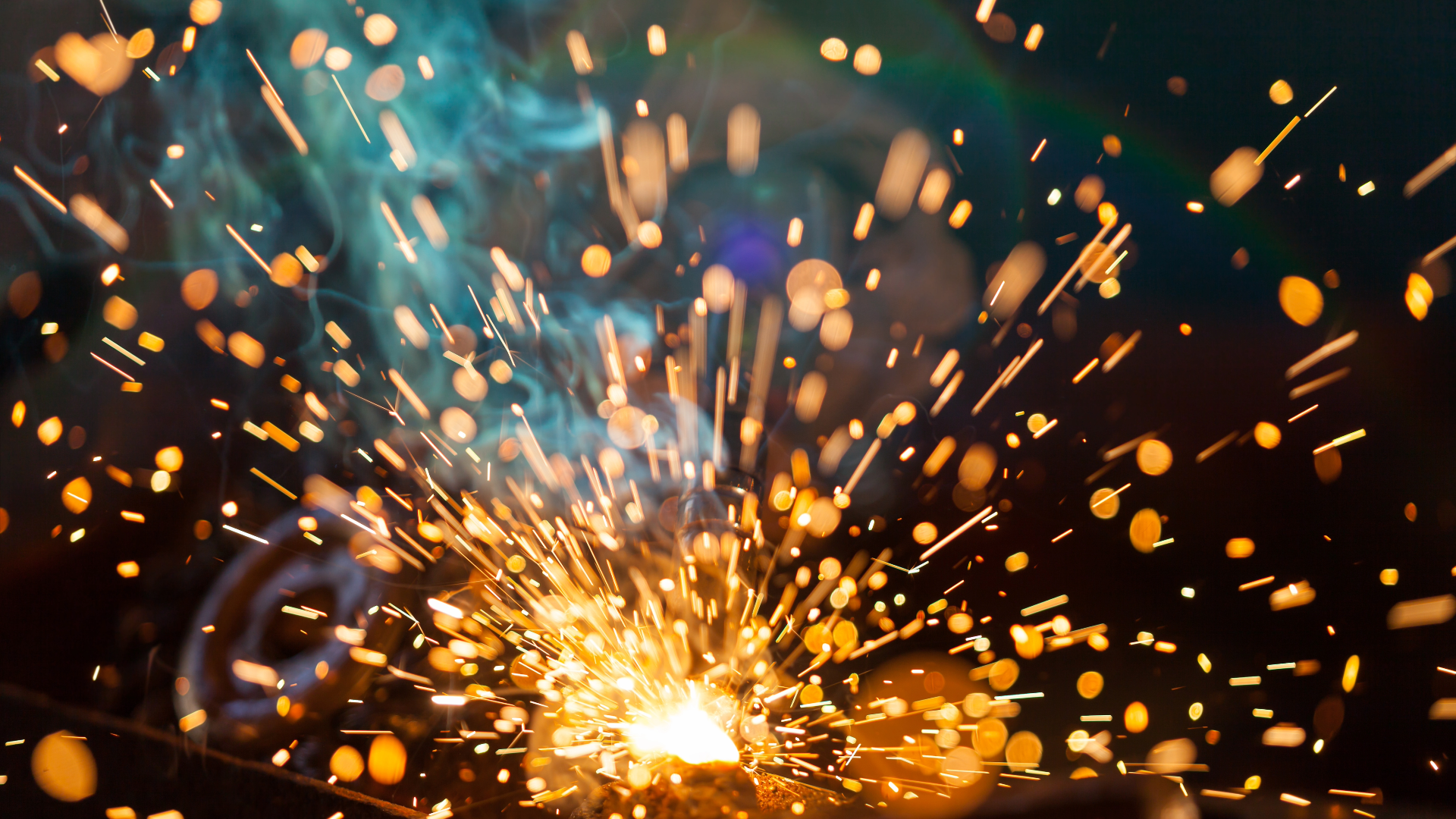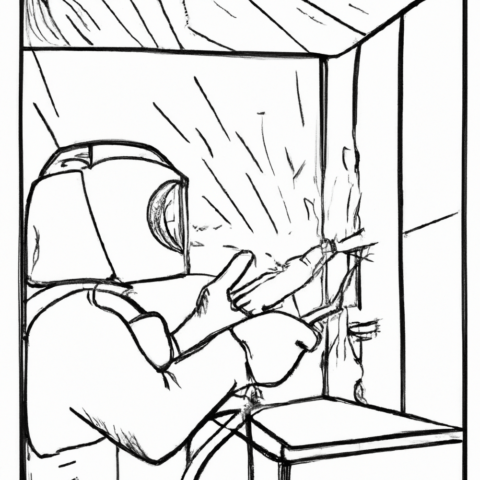Welding is an essential activity across a host of industries, from construction and manufacturing to automotive repair and beyond. However, welding involves significant risk factors that need to be diligently managed to ensure the safety and health of workers and bystanders. One vital piece of safety equipment that helps mitigate these risks is a welding screen.
A welding screen is a protective barrier designed to shield individuals near the welding area from various hazards associated with welding processes. These hazards include ultraviolet (UV) and infrared (IR) radiation, sparks and spatter, and intense glare that can lead to a condition known as “welder’s flash” or “arc eye.”
Welding screens often consist of a flame-retardant curtain attached to a portable frame, making them a versatile solution for different welding environments. They can be easily installed, moved, or modified to fit various workspace configurations and welding applications.
The importance of using welding screens cannot be overstated. They not only protect the welder but also everyone else in the immediate vicinity, such as other workers or visitors. By effectively containing the harmful effects of welding within a defined area, these screens help create a safer and more productive work environment.
As you proceed with this guide, you’ll gain a deeper understanding of welding screens, their key features, the safety considerations involved, and how to choose the best one to meet your specific needs.
In this guide:
Huge Savings on Welding Screens!
Check out our fantastic range of welding screens, curtains and accessories!

Types of Welding Screens
There are several types of welding screens, each designed for different use cases:
- Curtain-Style Welding Screens: These consist of one or more flame-resistant panels attached to a frame. They can cover large areas and are typically used in industrial settings. Some designs are portable, while others are more permanent.
- Portable Welding Screens: These are designed to be easily moved and adjusted. They often have wheels or other means of transportation built into the frame, making them ideal for worksites where the welding location changes frequently.
- Folding Welding Screens: Folding screens are versatile and easy to store. They can be expanded to cover a large area and folded away when not in use. These are useful for smaller workshops or mobile welding services.
Key Components of Welding Screens
The Frame: The frame of a welding screen needs to be robust and stable to securely hold the curtain or panel in place. Frames are often made from sturdy materials such as steel or aluminium. Some come equipped with casters for easy mobility.
The Screen or Curtain: This is the primary protective component of the welding screen. It’s usually made from a flame-resistant material like vinyl that’s specially designed to filter harmful UV and IR radiation. Some screens are transparent or semi-transparent to allow for supervision of the work without direct exposure to the hazards.
Understanding the different types of welding screens and their key components is a vital first step in selecting the right welding screen for your specific needs. In the following sections, we’ll dive deeper into safety considerations, factors to consider when buying, and special features of welding screens that further enhance their protective abilities.
Safety Considerations
Welding activities pose significant hazards due to the intense heat, harmful radiation, sparks, and fumes produced. As a result, maintaining safety for welders and bystanders is paramount. Welding screens play an integral part in these safety measures.
Role of Welding Screens in Welding Safety
Welding screens help mitigate several hazards:
- Radiation Protection: Welding produces harmful ultraviolet (UV) and infrared (IR) radiation, which can cause skin burns and eye injuries. Welding screens are designed to absorb or reflect these rays, providing effective protection.
- Spark and Spatter Protection: Welding can result in the ejection of hot metal particles, posing burn risks or even fire hazards if they contact combustible materials. Welding screens act as a physical barrier to contain these particles within the welding area.
- Glare Reduction: The intense light produced during welding can cause discomfort and eye strain. Welding screens help reduce this glare, increasing comfort and visibility for others in the workshop.
Safety Standards and Certifications
Choosing welding screens that comply with relevant safety standards is crucial for ensuring optimal safety.
In the United Kingdom, safety standards are set by the British Standards Institution (BSI). The standard BS EN ISO 25980 covers the requirements for welding curtains and screens intended for protection during welding and allied processes (this is the equivalent of EN 1598:2011 in the EU)
In the United States, the American National Standards Institute (ANSI) sets safety standards for welding screens. AWS F2.3M:2019 is the Specification for Use and Performance of Transparent Welding Curtains and Screens.
Certification marks indicating compliance with these standards should be visible on the product. They are an assurance that the welding screens meet the required safety criteria in terms of flame resistance, frame stability, and effectiveness in blocking UV and IR radiation.
By understanding the role of welding screens in safety and the relevant safety standards in your location, you can make an informed choice that prioritizes the safety of all individuals in the welding area.
Factors to Consider When Buying Welding Screens
When choosing a welding screen for your workshop or job site, there are several factors to consider. These factors will ensure the screen you choose is not only safe and compliant with regulations, but also suitable for your specific needs and environment.
Material: The material of the welding screen is crucial. It needs to be fire-resistant to withstand sparks and spatters generated during the welding process. PVC is a common material due to its excellent flame resistance and durability. Check the material specifications and ensure they meet the safety standards.
Size: The size of the welding screen should be determined by the workspace and the nature of the welding tasks. Larger screens may be required for more extensive welding operations or in larger workshops, while smaller screens may suffice for smaller tasks or workspaces.
Portability: If your welding tasks change locations frequently, consider a portable welding screen. These often come with casters or other mobility solutions, making it easy to move the screen to different locations as needed. If you’re working outdoors then also consider a welding umbrella or welding tent to keep you protected from the elements!
Frame Construction: The frame needs to be robust and stable to hold the screen securely. Frames are typically made of sturdy materials like steel or aluminium. Consider the environment and usage when choosing the type of frame. For example, if the screen is likely to be moved frequently, a lightweight yet durable frame would be beneficial.
UV Protection: The screen should offer UV protection to safeguard against harmful ultraviolet radiation produced during welding. Look for screens that meet or exceed the UV protection requirements set out in the safety standards applicable in your region.
Noise Control: Welding operations can generate significant noise, which could be disruptive in a busy workshop. Some welding screens are designed with noise-dampening materials that help reduce noise pollution, creating a more comfortable and productive working environment.
Fume Protection: Welding processes often produce hazardous fumes, which can pose health risks if inhaled. While a welding screen is not a complete solution for fume control, it can serve as a first line of defence. It can help channel the fumes towards extraction points when used in conjunction with proper ventilation and fume extraction systems.
Screen Colour Suitability: Welding screens come in different colours, each suited to specific types of welding processes and light filtering needs:
- Yellow: Ideal for low to medium amperage welding situations, yellow screens can enhance visibility in the work area, making them beneficial in larger facilities.
- Orange and Red: These colours reflect more light and are suitable for medium amperage welding operations. They provide a balance between visibility and protection.
- Blue: Due to its dark hue, blue screens effectively filter a substantial amount of UV radiation. This makes them suitable for environments with medium to high protection welding conditions.
- Dark Green: These screens are optimal for high-risk environments that involve processes such as plasma cutting and laser welding. Dark green screens offer very limited visibility but provide excellent protection, filtering virtually all UV radiation.
Modular Design: Some welding screens feature a modular design that allows you to connect multiple screens or adjust the configuration to suit your workspace. This can be particularly beneficial in larger workshops or in situations where the welding area changes regularly.
Replacement Curtains: Over time, welding screens may become damaged or worn due to the intense conditions they are exposed to. Instead of replacing the entire screen, including the frame, it’s often possible to purchase replacement curtains. This can be a cost-effective way of maintaining the effectiveness of your welding screen.
Booth Screens: For certain situations, a traditional welding screen might not provide sufficient protection. In these cases, booth screens can be an effective solution. A booth screen typically includes multiple joined panels, creating a semi-enclosed space that offers enhanced protection from welding hazards. Booth screens are particularly useful in environments where high-amperage welding takes place or where additional isolation from other work areas is needed.
Other Accessories: Other accessories might include caster wheels for easy mobility, additional panels for expanding the coverage area, or specialized clips for securing curtains in a specific configuration. Always check with the manufacturer or supplier to understand what additional options are available for the welding screen model you are considering.
Customizing your welding screen and adding the right accessories can ensure that your screen suits your unique needs, optimizing safety and productivity in your workspace.
Maintenance and Care of Welding Screens
Proper maintenance and care of welding screens are crucial to ensure their longevity and continued effectiveness. This includes regular cleaning, routine maintenance checks, and timely replacement of worn-out components.
Cleaning and Maintenance Tips:
- Regular Cleaning: Dust, debris, and welding spatter can accumulate on the surface of the screen. Clean the screen regularly with a mild detergent and a soft cloth to keep it clear and effective. Avoid using harsh chemicals or abrasive materials that could damage the screen.
- Check for Damage: Regularly inspect the screen for any signs of damage such as tears, burns, or discolouration. Damage to the screen can reduce its effectiveness in protecting against welding hazards.
- Storage: When not in use, store the welding screen in a clean, dry place. Avoid areas with extreme temperatures or exposure to direct sunlight, which can degrade the screen material over time.
Replacement of Components:
- Screen/Curtain: If the screen shows signs of damage or wear that cannot be repaired, replace it promptly to maintain a safe working environment. In many cases, it’s possible to replace just the curtain rather than the entire screen assembly, making this a cost-effective solution.
- Frame Components: Inspect the frame regularly for signs of damage or wear, such as cracks, rust, or loose connections. If any components are damaged, replace them immediately to ensure the stability and safety of the screen.
- Accessories: Regularly check any accessories, such as caster wheels or clips, for signs of wear or damage. Replace as necessary to keep your screen mobile and secure.
By properly caring for and maintaining your welding screen, you can extend its lifespan and ensure it continues to provide effective protection in your welding workspace.
Frequently Asked Questions
In this section, we address some commonly asked questions about welding screens. These questions touch on various aspects, from safety considerations to maintenance and use.
Q1: Do all welding screens provide the same level of protection?
No, the level of protection varies depending on the materials, construction, and specific design of the screen. Factors such as UV radiation protection, flame resistance, and the ability to contain sparks and spatter can differ. Always check the specifications and safety ratings of a welding screen before purchase.
Q2: Can I use a welding screen as a substitute for personal protective equipment (PPE)?
No, a welding screen is not a substitute for PPE. While a screen can help protect bystanders and individuals in the vicinity from hazards such as radiation, sparks, and fumes, individuals directly involved in the welding process should always wear appropriate PPE. This includes items like welding helmets, safety glasses, protective clothing, and gloves.
Q3: How often should I replace the curtain/screen?
The frequency of replacement depends on the usage and working conditions. Regularly inspect the screen for signs of damage or wear such as tears, burns, or discoloration. If any damage cannot be repaired, the screen should be replaced. In a busy welding shop with heavy use, replacement might be needed more frequently than in a shop with lighter, less frequent welding activities.
Q4: Are welding screens necessary for all types of welding processes?
Most welding processes generate intense light, UV radiation, sparks, and spatter, all of which can pose hazards to individuals in the vicinity. Therefore, it’s generally recommended to use welding screens for all types of welding processes. However, the specific type of screen may vary depending on the nature of the welding process and the level of protection required.
Q5: Can I use a welding screen outdoors?
Yes, welding screens can be used outdoors, but it’s important to consider factors like wind, which can knock over a lightweight screen or cause sparks and spatter to spread further. A sturdy screen with a robust frame is generally recommended for outdoor use.
Remember, when in doubt, it’s always best to consult with a professional or a trusted supplier to ensure you choose the right welding screen for your needs and adhere to all necessary safety precautions.




